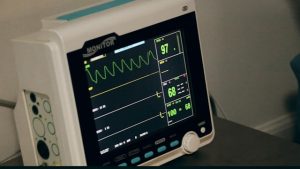Go to Page Section:
No matter your position within the healthcare industry, you must adhere to a strict set of codes and honor the oath you have pledged.
It underpins the importance of following procedures and complying with regulations.
An alarming issue that presents itself for various reasons is medical malpractice risk.

It is a serious concern and can have severe consequences for medical professionals and patients.
Medical malpractice occurs when a healthcare worker fails to provide the standard of care expected in their field, which harms or has the potential to harm the patient.
This article explores essential tips on how to avoid medical malpractice.
Clear and Transparent Communication With Patients
Communication is fundamental to all aspects of life but is especially crucial in the medical industry.
Clear and effective communication between healthcare providers and patients builds trust, allows informed decision-making, and minimizes risk and miscommunication.
Here are some key aspects to consider.
Consent
This has been a consistently hot topic, and for good reason.
Medical professionals must obtain consent from patients before treatment can commence, regardless of how critical the treatment may be.
Contrary to popular belief, patients are allowed to refuse treatment; however, depending on the state or even country, specific laws govern this.
Medical staff must clearly explain the procedure and any risks involved and document the consent process that protects both parties.
Educating Patients
Most people will need help understanding medical jargon, so it is imperative to keep patients informed.
Information that includes treatment options, expected outcomes, and an overview of their condition must be shared.
Always encourage your patients to ask questions because well-informed people make educated decisions.
Correct Documentation
It is impossible to provide treatment if a patient’s diagnosis, medical insurance, billing details, and treatment plan have not been documented.
Such cases usually become medical malpractice cases, primarily if the treatment negatively affects the patient.
Accurate documentation of patient details is crucial as it can serve as evidence in the event of a malpractice claim.
For example, solutions for medical staff include hiring an ABA billing expert company to facilitate the entire billing process.
All the patient information is available in a database where you can update details and record treatments.
Companies like Your Missing Piece provide a valuable service that eliminates inaccuracies.
Communicating Diagnosis and Results
This is often frustrating for patients since delayed diagnosis and result communication can lead to missed opportunities and timely intervention.
This can lead to a malpractice lawsuit.
There are common malpractice causes, and the statistics are staggering, with misdiagnosis or delayed diagnosis accounting for nearly a third of all cases.
This once again reiterates the need for timely communication constantly.

Remain Transparent
While the fight for transparent medical billing prices was a success, with a bill being passed in favor of consumers (people can find out the cost of appointments before they book them or treatments before they receive them), people are still fighting for transparency from doctors.
Not only does transparency foster trust, but patients feel more confident about a procedure when they are involved in the treatment process. Here are tips to help you.
Patient First
You might wonder how transparency relates to malpractice, but it goes together.
It might not be unethical to omit specific details about a treatment plan; however, not being forthcoming with expected outcomes, timelines, and even the areas affected could lead to malpractice further down the line — especially if the patient’s expectation is not met.
Involve your patient in decision-making and actively listen to their concerns and questions.
Clearly Explain Risks
It is vital to share each risk, no matter the treatment.
If, in extreme cases, your patient has a 2% chance of survival, for instance, no matter how difficult it may be to tell someone, you must share this information.
Ultimately, the patient must understand the risks to make an informed decision.

Encourage Second Opinions
In theory, people might believe this is ill-advised; however, when the medical decision is significant, your patient should look at alternative solutions.
Think about it in this way: say a procedure means your patient will lose four fingers, and they agree to proceed.
After they discover that a more successful yet alternative option could have meant they would not have lost any fingers, this could lead to a malpractice lawsuit.
Especially if the information is widely available and your patient needs help finding another opinion.
Discuss Mistakes
One of the most powerful quotes about doctors says, “A doctor is a person who gives people an opportunity for a healthy tomorrow.” Doctors are also humans and can make mistakes (albeit not critical).
However, sometimes even the most organized and decorated healthcare professional has a slip-up occasionally.
Errors do occur and don’t necessarily happen during the treatment process.
It can appear with the patient’s paperwork where something could have been misspelled.
It can also occur when patients are administered their medication at the hospital to be taken home, and the instructions weren’t clear enough.
Remember to apologize for these mistakes, outline any steps being taken to rectify them, and ensure it does not happen again.
Do reassure the patient about their ongoing care and how this is the top priority.
Open communication can often prevent legal action and simultaneously build trust and loyalty.
Cover All Bases, Protecting Yourself and Your Patient
Medical malpractice cases can negatively impact healthcare providers and patients alike.
It can lead to lawsuits, fines, the revoking of medical licenses, and damaged reputations.
These consequences alone are enough to encourage you to protect yourself in the following ways: communicating and allowing consent, educating your patients, using the correct documentation, including seeking the services of billing experts like Your Missing Piece, and sharing diagnosis and results quickly to allow for treatment adjustments and intervention.


Leave a Reply